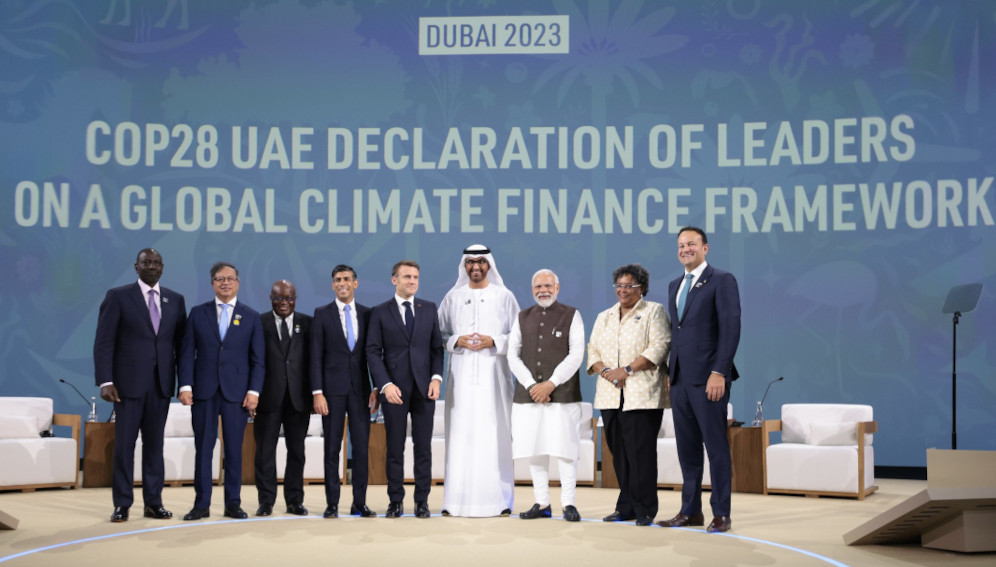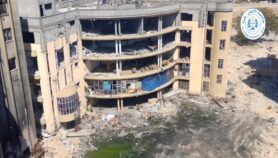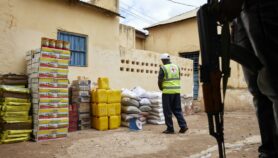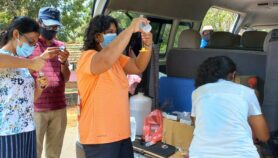08/12/23
COP28: climate cash exclusion for conflict zones to end

By: Hazem Badr
Send to a friend
The details you provide on this page will not be used to send unsolicited email, and will not be sold to a 3rd party. See privacy policy.
[CAIRO] Commitments made at COP28 could pave the way for ending the partial exclusion of conflict countries from climate financing, but must be followed by appropriate adaptation programmes, analysts say.
Countries affected by climate change and conflict receive – on average – only a third as much as non-conflict zones, according to the International Crisis Group think-tank.
Representatives of 74 countries and 40 international organisations endorsed the Climate, Relief, Recovery and Peace Declaration at the UN conference in Dubai, promising to scale up financial resources to build climate resilience in fragile and conflict-affected states.
Most of these countries are in the Middle East and North Africa (MENA) region, which is among the most vulnerable places in the world to climate change.
“Climate change will not wait for stability to occur and it is a mistake to treat the challenges it poses, such as climate adaptation, as non-priorities.”
Roula Khadra, researcher, International Centre for Advanced Mediterranean Agronomic Studies
The disparity exists because funders often assume that climate adaptation cannot be prioritised in times of war amid more urgent needs such as securing food, water and electricity, or that it is too risky.
“This is a trend that must be changed,” says Roula Khadra, a researcher at the International Centre for Advanced Mediterranean Agronomic Studies, in Italy.
“Climate change will not wait for stability to occur,” Roula tells SciDev.Net. “It is a mistake to treat the challenges it poses, such as climate adaptation, as non-priorities.”
Financing climate adaptation in conflict countries was put on the agenda for the first time on the fourth day of the ongoing COP28 summit in Dubai (30 November to 12 December).
Conflict countries in the region such as Syria, Yemen, Libya, Sudan, and Palestine, do not receive sufficient support to finance adaptation projects.
Allocating climate adaptation finance to these countries – as called for in the declaration – could even prevent the escalation of conflicts, believes Roula, explaining that conflicts are often ignited over resources, which are becoming scarce due to climate change.
“Therefore, international bodies and donors must design appropriate climate adaptation programmes for these countries,” she urged.
‘Operational risks’
“Ignoring countries in conflict would lead to abandoning large parts of the world,” said Mazin Qumsyeh, director and founder of the Palestine Museum of Natural History and the Palestine Institute for Biodiversity and Sustainability at Bethlehem University in Palestine.
“Funders tend to treat conflict as a constraint on climate finance, due to concerns about operational risks or fragile governance,” Qumsyeh tells SciDev.Net.
“But it is a mistake to completely surrender to this reality.”
Qumsyeh believes that donors should develop their capabilities to plan projects in and around conflict areas and learn from humanitarian agencies working in such circumstances. He says this can help to manage risks and provide a bridge to stabilisation efforts.
“Humanitarian agencies are generally loath to take on new responsibilities that distract from their core work, but some – including the World Food Programme, which received accreditation to receive climate funds in 2016 – appear to be getting active in this direction,” says Qumsyeh.
Attracting agencies like these with experience in conflict areas is crucial, he adds.
Environment and conflict specialists Elise Doumergue and Phoebe Spencer believe that local community climate adaptation projects can be successful in conflict countries in the MENA region, even in remote and unsafe areas.
These are less vulnerable to disruptions caused by armed conflict than public sector activities, they say in an article for the World Bank, and can revitalise livelihoods dependent on natural resources, improving the resilience of local communities to shocks.
Hesham Eissa, former head of the Central Department of Climate Change at the Egyptian Ministry of Environment and former coordinator of the national liaison to the United Nations Framework Convention on Climate Change, tells SciDev.Net: “Climate adaptation in poor societies should be seen as a means and tool to prevent conflicts.”
Private investors are reluctant to take on climate adaptation projects, such as building wastewater treatment plants, desalinating water, or distributing drought-resistant seeds, because they do not typically generate revenue, says Eissa.
“We must work to change this trend and support countries towards contributing more to adaptation projects, by facilitating spending procedures through the United Nations Green Climate Fund,” he adds.













